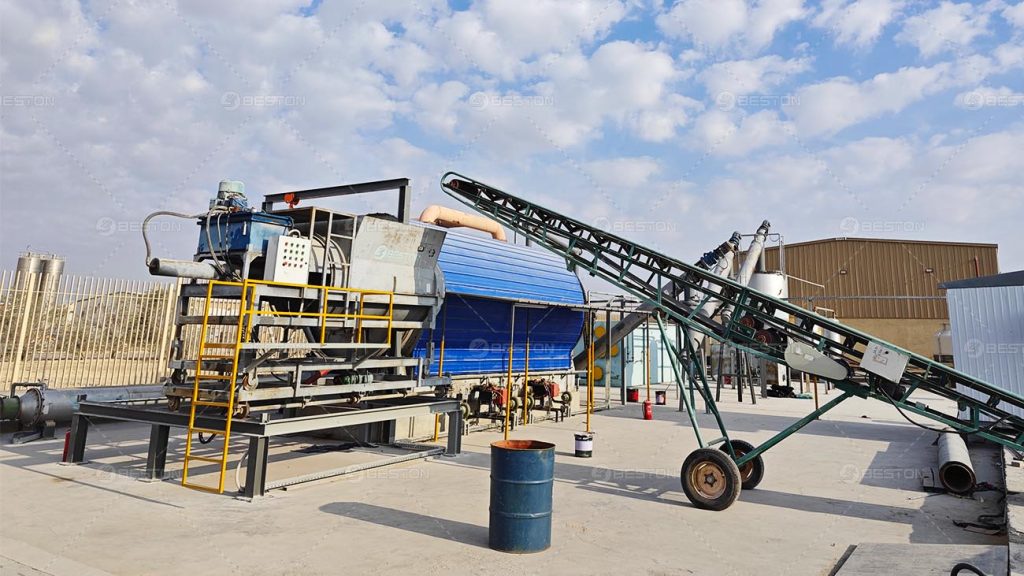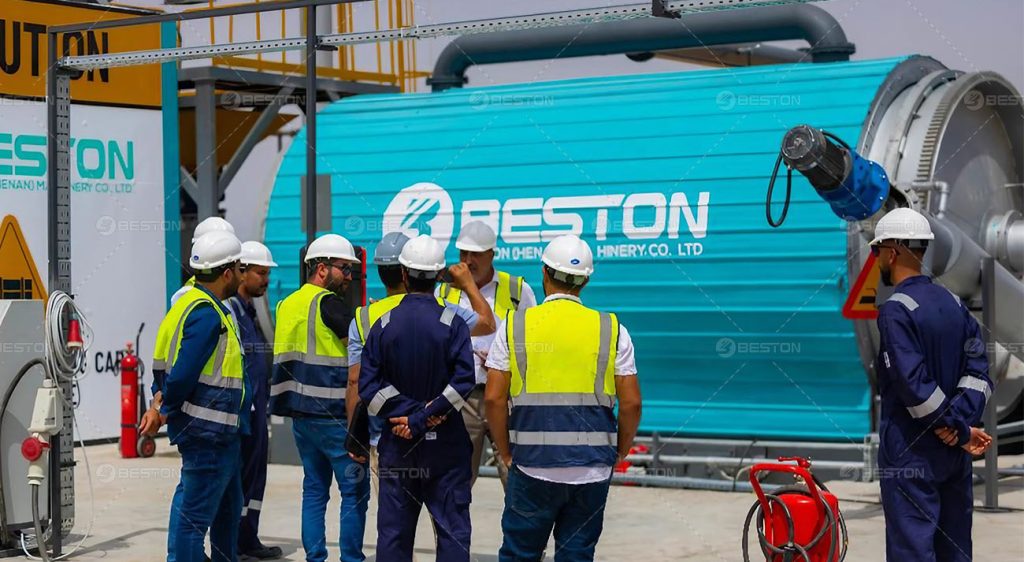In the relentless pursuit of environmental sustainability, the menace of tire pollution emerges as a formidable challenge. As the global automotive landscape expands, so does the predicament of disposing of end-of-life tires responsibly. However, within the crucible of technological innovation, a beacon of hope arises – tyre pyrolysis plants. This article delves into the intricacies of this sustainable solution, exploring the mechanics, environmental impact, and the crucial aspect of tyre pyrolysis plant cost.
Unraveling the Tire Pollution Conundrum
Tire pollution is a pervasive environmental issue, with discarded tires often finding their way into landfills, rivers, and even oceans. Traditional disposal methods, including incineration, have proven to be environmentally detrimental, releasing harmful pollutants and contributing to resource wastage. In this context, tyre pyrolysis plants present a revolutionary alternative.
The Pyrolysis Process
At the heart of the solution lies the pyrolysis process, a thermal decomposition method that transforms tires into valuable products without the environmental repercussions associated with conventional disposal methods. The process involves subjecting tires to high temperatures in an oxygen-starved environment, causing them to break down into oil, gas, and carbon black.
This controlled decomposition, facilitated by advanced tyre pyrolysis plant, not only addresses the issue of tire pollution but also transforms the problem into an opportunity for resource recovery.
Environmental Emissaries: Tire Pyrolysis Plants
Resource Recovery
One of the remarkable aspects of tyre pyrolysis plants is their ability to extract valuable resources from discarded tires. The resulting products – pyrolysis oil, syngas, and carbon black – serve as raw materials for various industries.
Pyrolysis Oil: A Green Energy Source
The pyrolysis oil derived from the process is a versatile fuel. Its applications range from industrial heating to electricity generation, offering a green alternative to fossil fuels. This not only reduces dependence on traditional energy sources but also curtails the carbon footprint associated with energy production.
Syngas: Fueling Industrial Processes
Syngas, a synthesis gas comprising hydrogen and carbon monoxide, emerges as another valuable byproduct. Industries can harness syngas for heat and power generation, fostering a circular economy where waste materials become feedstock for essential processes.
Carbon Black: A Sustainable Raw Material
The carbon black obtained through tire pyrolysis serves as a sustainable raw material for various industries, including rubber manufacturing, ink production, and even the burgeoning field of sustainable construction materials.
Mitigating Greenhouse Gas Emissions
Unlike traditional tire disposal methods, pyrolysis significantly reduces the emission of greenhouse gases. The controlled environment of fully continuous pyrolysis plant minimizes the release of harmful pollutants, contributing to air quality improvement and climate change mitigation.
Financial Dynamics: Understanding Tyre Pyrolysis Plant Cost
Initial Investment
The adoption of tyre pyrolysis plants as a sustainable solution necessitates a consideration of the initial investment. The cost of acquiring and installing the plant is a critical factor, influenced by the plant’s capacity, technology, and efficiency.
Technological Variations
Different tyre pyrolysis plant technologies exist, ranging from batch systems to continuous processes. Each technology comes with its advantages and associated costs. While batch systems may have a lower initial cost, continuous processes often offer higher efficiency and throughput, affecting the overall cost dynamics.
Operational Costs
Beyond the initial investment, operational costs play a pivotal role in evaluating the economic feasibility of tyre pyrolysis plants. These costs encompass raw material handling, energy consumption, maintenance, and labor. Advanced technologies and automated systems can optimize operational efficiency, impacting long-term costs.
Return on Investment
The financial viability of tyre pyrolysis plants hinges on the return on investment (ROI). The revenue generated from selling the extracted products – pyrolysis oil, syngas, and carbon black – contributes to the ROI calculation. The increasing demand for sustainable alternatives positions these products favorably in the market, influencing the economic outlook. Often cost-effective equipment is provided by reliable pyrolysis plant manufacturers. Beston Group Co., Ltd. is a good choice.

Challenges and Innovations
While the benefits of tyre pyrolysis plants are evident, challenges persist. Technological innovations continue to address these challenges, ensuring that the transition to pyrolysis as a primary tire disposal method remains seamless.
Emission Control
Efforts to enhance emission control during the pyrolysis process are paramount. Advanced filtration systems and catalytic converters are being integrated into tyre pyrolysis plants to minimize the release of any residual pollutants, further elevating their environmental credentials.
Continuous Research
Continuous research focuses on improving the efficiency of the pyrolysis process, exploring new catalysts, and identifying alternative applications for the byproducts. This commitment to innovation reinforces the sustainability of tyre pyrolysis plants as a long-term solution.
Conclusion: A Paradigm Shift Towards Sustainability
In conclusion, the integration of tyre pyrolysis plants marks a paradigm shift in the approach to tire pollution. The environmental benefits, resource recovery potential, and the evolving landscape of tyre pyrolysis plant cost dynamics position this technology as a cornerstone in the quest for a sustainable future.
As industries and policymakers navigate the complexities of waste management, the pyrolysis revolution offers a blueprint for transforming environmental challenges into opportunities. The synergy between technological advancements, environmental stewardship, and economic considerations propels tyre pyrolysis plants into the forefront of sustainable solutions, heralding a future where tire pollution becomes a relic of the past.